|
TREES OF THE CENTRAL APPALACHIANS |
|---|
|
Including: Blue Ridge
Parkway, Shenandoah National Park, Pisgah, Jefferson & Washington National Forests |
| 6 Page Laminated Guide |
| Outside 3 Pages Opens to 11" by 25" |
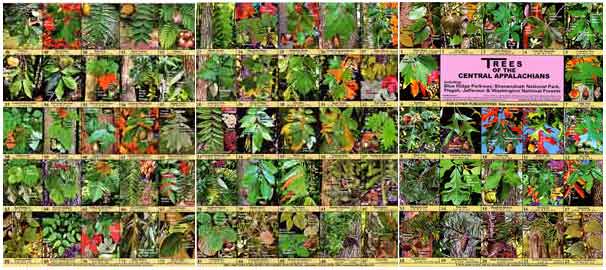 |
|
TREES OF THE CENTRAL APPALACHIANS |
|---|
|
Including: Blue Ridge
Parkway, Shenandoah National Park, Pisgah, Jefferson & Washington National Forests |
| 6 Page Laminated Guide |
| Outside 3 Pages Opens to 11" by 25" |
 |
| Outside Photo Page 8" by 11". Folds inside. |
Back Page Folds to 8.5 by 11". |
Front Page Folds to 8.5 by 11". |
|---|
|
|
|||
| Typical Species' Photos | |||
| (Actual size varies; including approximately 1.5" by 2.2" and 1.6" by 2.2") | |||
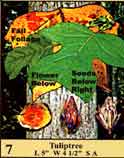 |
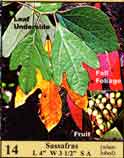 |
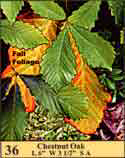 |
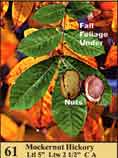 |
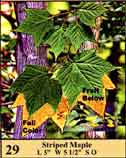 |
The surrounding photos are representative of the 72 species photos contained in this guide. Most trees and even some shrubs found in and around the Parks are included. Excluded are ornamentals (although some are included when they resemble native species) and trees considered rare and unlikely to be seen. The species' photos show as much visible information as possible, including seeds, fruit, trunks and fall color, if pertinent. |
|
| Photo Caption Information |
|---|
|
Under the common name, leaf characteristics and measurements are listed . The legend (in inches) is as follows: L=Length of leaf/needle, Ltl=Length of leaflet, W=Width of leaf, Wtl=Width of leaflet, C=Compound leaf, S=Simple leaf, A=Alternate leaf arrangement, O=Opposite leaf arrangement; Additional comments refer to needles or leaves. The Sassafras photo caption above says "(when lobed)" referring to the majority of leaves pictured. |
|
|
|---|
| Inside 3 Pages Opens to 11" by 25" |
 |
|
|
||
| Text Blocks | ||
| (Actual size approximately 2.2" by 1.5" and 2.2" by 1.6") | ||
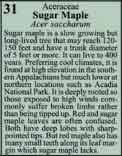 |
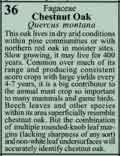 |
All three inside pages contain text blocks corresponding to each species pictured on the front. These provide family, common and scientific name, identification aids, behavior traits and often something of the species' role in nature and plant communities. Pages are arranged by tree distribution. |
| Sample of Sugar Maple Text | Sample of Chestnut Oak Text |
|---|---|
|
Sugar maple is a slow growing but long-lived tree that may reach 120-150 feet and have a trunk diameter of 5 feet or more. It can live to 400 years. Preferring cool climates, it is found at high elevation in the southern Appalachians but much lower at northern locations such as Acadia National Park. It is deeply rooted so those exposed to high winds commonly suffer broken limbs rather than being tipped up. Red and sugar maple leaves are often confused. Both have deep lobes with sharp-pointed tips. But red maple also has many small teeth along its leaf margin which sugar maple lacks. |
This oak lives in dry arid conditions within pine communities or with northern red oak in moister sites. Slow growing, it may live for 400 years. Common over much of its range and producing consistent acorn crops with large yields every 4-7 years, it is a big contributor to the annual mast crop so important to many mammals and game birds. Beech leaves and other species within its area superficially resemble chestnut oak. But the combination of multiple rounded-knob leaf margins (lacking sharpness of any sort) and non-white leaf undersurfaces will accurately identify chestnut oak. |
| On Line Sales Outlet |
|---|
|